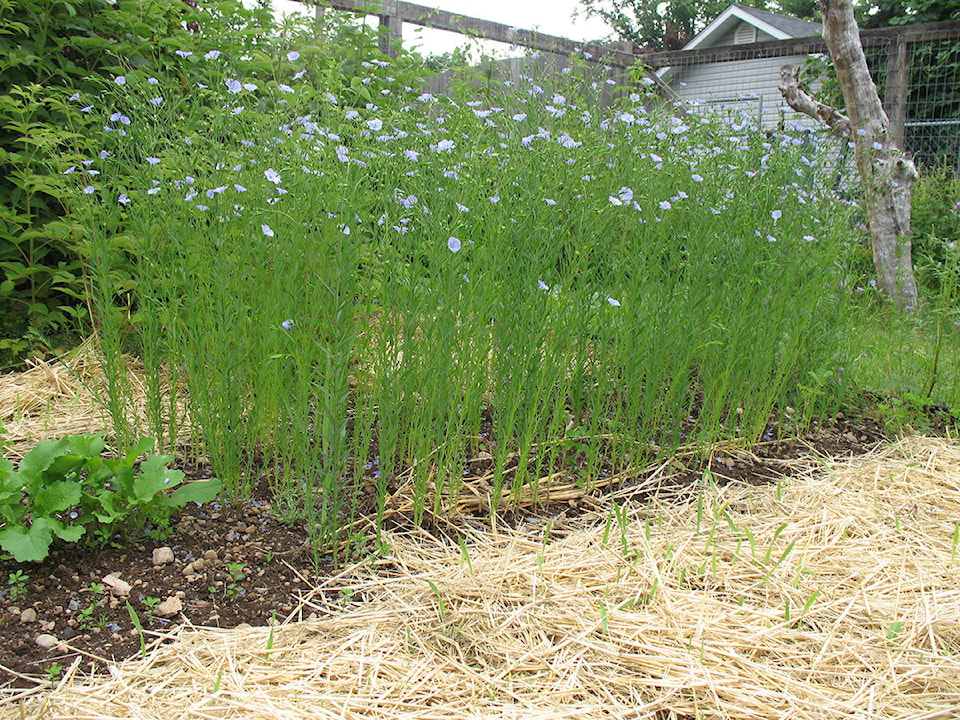By Mary Lowther
Dan Jason of Salt Spring Seeds turned me on to growing grains and the tastiest beans I’ve ever eaten — Uganda Bush Beans. In fact, I just sowed some this week from last year’s crop of seeds. His flax, oats and quinoa grow like weeds.
The oats and quinoa were more trouble to process than an old granny lady like me cared to deal with. The oats resisted threshing so I ended up throwing the whole mess into the compost heap. The quinoa fell off its stalks into the awaiting bucket easily, but bitter saponins cover each seed. I didn’t know this so my first pot of quinoa was inedible, nothing like the stuff you buy.
It turns out that one must rub off the saponins in water and then dry the grain for storage. I filled up a bowl with water, poured in some quinoa and rubbed the grains like crazy in several waters, gave them a final rinse and cooked up another batch. Still bitter. A web site suggested blending quinoa with water for a few seconds — just long enough to remove the saponins, so I gave that a whirl. Nope, still bitter. I wonder how commercial enterprises do it.
Flax, on the other hand, grew beautifully, producing tons of lovely seeds that needed no more work than some light threshing into a bucket. Since I often use flax in cooking, I’m growing some again this year. Rich in omega three fatty acids, flax grew unperturbed by pests or disease and reached about five feet.
I sowed them in early spring about one inch apart in rows one foot apart. The rows probably should have been two feet apart, but I’m greedy. I’m fertilizing them the same way as the rest of the garden; side dressing with organic fertilizer every three weeks and sprinkling compost tea on them every two weeks. When they start to flop over I’ll hammer in a few stakes around the bed and tie string around them.
Bees love the blue flowers that develop into seeds that mature by late summer. Here’s a tasty recipe using the dehydrator, using flax and the spent pulp from making nut or seed milk, copied from the Blissful recipe book by Heather Cunliffe.
Cinnamon Toast
1 cup pulp from making nut milk
1/3 cup ground flax
2.5 T. oil
2.5 T. raisins
2.5 T chopped walnuts
1 pitted medjool date, chopped finely
1 T. honey
¼ tsp. cinnamon
¼ tsp. salt
Mix everything together (I use my hands). Spread about ¼ inch thick on dehydrating sheets and dehydrate at 115 F. for 12 hours or overnight. If the dehydrator doesn’t have a temperature dial, just dry them until they’re crisp. I love this stuff, and it’s the best recipe I’ve come across to use up the pulp leftover from making nut or seed milk.
Please contact mary_lowther@yahoo.ca with questions and suggestions since I need all the help I can get.
